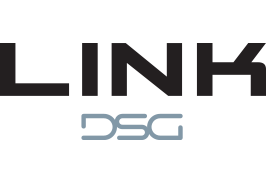From towering skyscrapers to sprawling infrastructure projects, the construction industry is responsible for shaping the world around us. While the end results of these projects may seem impressive, the road to their completion is a long and complicated one. In the midst of it all, one critical element often goes overlooked: documentation.
It's easy to think of construction as a purely physical undertaking, but the reality is that it's just as much a mental exercise. In order for a project to be successful, it needs to be meticulously planned, organized, and tracked. This is where documentation comes in. From project plans and contracts to permits and safety records, the documentation involved in construction projects is extensive and complex.
Yet despite its importance, documentation is often an afterthought in the construction industry. Teams are so focused on getting the physical work done that they overlook the critical role that documentation plays in the process. This can lead to all sorts of problems down the line, from disputes over payment to safety violations and beyond.
But it doesn't have to be this way. By taking documentation seriously and making it a priority, construction teams can ensure that their projects run smoothly, stay on track, and avoid costly mistakes. In this comprehensive guide, we'll explore the vital role that documentation plays in construction projects, and provide practical tips and advice for creating and managing effective documentation. Whether you're a seasoned industry professional or just starting out, this guide will be an invaluable resource for ensuring project success. So buckle up and let's dive in!
The Importance of Documentation in Construction Projects
Documentation is a crucial component of any construction project. It serves as a record of the work performed, the materials used, and the agreements made between stakeholders. Effective documentation ensures that all parties involved have a clear understanding of the project's objectives, requirements, and scope. It helps to establish the plans and specifications for the work to be done, including materials, methods, and schedules.
Moreover, documentation plays a key role in quality control and risk management. By providing a record of inspections performed, work completed, and materials used, it helps to ensure that the work meets the necessary standards and regulations. It also enables stakeholders to identify potential issues early on and take corrective action before they become more serious and costly.
Finally, documentation provides legal protection in the event of a dispute. It serves as evidence of the work performed, the parties involved, and the agreements made. In case of a dispute, having comprehensive and accurate documentation can be crucial for winning a case. Therefore, it's essential to make documentation a priority in any construction project to ensure its success and mitigate risks.
Types of Documentation Required in Construction Projects
Documentation in construction projects can take many forms, and the types of documentation required will vary depending on the project's size, scope, and complexity. However, some of the most common types of documentation that are typically required in construction projects include:
Design documentation – This includes plans, drawings, specifications, and other documents that describe the design of the project. It outlines the materials, methods, and standards to be used in the construction process.=Contract documentation: This includes contracts, agreements, and other legal documents that outline the terms and conditions of the project. It establishes the roles and responsibilities of each party involved and the procedures for communication, decision-making, and problem-solving.
Construction documentation – This includes daily logs, progress reports, inspection reports, and other documents that provide a record of the work performed on the project. It helps to track the project's progress, identify issues, and ensure that the work is completed on schedule and on budget.
Financial documentation – This includes budgets, estimates, invoices, and other financial documents that track the project's costs and expenses. It helps to ensure that the project stays within its budget and that payments are made to vendors and contractors on time.
Legal documentation – This includes permits, licenses, and other legal documents required for the project. It helps to ensure that the project complies with all local, state, and federal regulations and that all necessary approvals have been obtained.
It's essential to keep all of these types of documentation organized and up-to-date throughout the construction process to ensure that the project runs smoothly and meets all necessary requirements.
How to Create Effective Documentation for Construction Projects
Creating effective documentation for construction projects can be a challenging task, but it's essential to ensure the project's success. Here are some key tips to help you create effective documentation:
Start early – Documentation should be a priority from the beginning of the project. Establish a plan for creating, organizing, and maintaining documentation and ensure that everyone involved understands its importance.
Standardize documentation – Develop a set of standard templates and forms for the various types of documentation required. This will help to ensure consistency and make it easier to organize and manage the documentation.
Keep it simple – Documentation should be easy to understand and use. Use plain language, avoid jargon, and use visuals whenever possible to help clarify complex information.
Be comprehensive – Ensure that all necessary information is included in the documentation. This includes plans, specifications, schedules, and any other relevant information that will help to ensure the project's success.
Be organized – Develop a system for organizing and managing documentation. Use consistent naming conventions, file structures, and tracking systems to make it easier to find and retrieve documents when needed.
Keep it up-to-date – Documentation should be updated regularly to reflect changes in the project's scope, schedule, and requirements. Ensure that all stakeholders are aware of any changes and that documentation is updated accordingly.
By following these tips, you can create effective documentation that will help to ensure the success of your construction project.
Best Practices for Managing Construction Documentation
Managing construction documentation can be challenging, but with the right approach, it can be done effectively. Here are some best practices to help you manage construction documentation:
Establish a documentation management plan – Develop a plan for managing documentation that includes the roles and responsibilities of all stakeholders, the types of documentation required, and the systems and tools to be used for documentation management.
Use a centralized system – Use a centralized system to store and manage all project documentation. This can be a cloud-based system or a physical document control center, depending on the project's needs.
Keep both physical and digital copies of everything – Maintain both physical and digital copies of all project documentation to ensure that you have a backup in case of data loss or physical damage.
Develop a naming convention – Develop a naming convention for all project documents to ensure consistency and make it easier to find and retrieve documents when needed.
Set up a review and approval process – Establish a process for reviewing and approving project documentation to ensure that all stakeholders have access to the most up-to-date information.
Train all stakeholders – Ensure that all stakeholders, including project managers, contractors, and subcontractors, are trained on the documentation management plan and understand their roles and responsibilities in managing project documentation.
Regularly review and update documentation – Review project documentation regularly and update it as necessary to reflect changes in the project's scope, schedule, and requirements.
These are just some of the steps that people typically take when making sure that they’re staying organized and implementing them into your own business can help you from misplacing important documents.

Staying Organized in the Best Way Possible
Organizing construction documentation is crucial for the success of any project. It helps ensure that all stakeholders have access to the information they need when they need it, and can help prevent errors and delays that can impact the project's timeline and budget.
Proper organization can also help construction companies run more smoothly. When project documents are organized in a centralized system and named consistently, it becomes easier to find and retrieve documents when they're needed. This can save time and reduce the risk of errors and misunderstandings that can occur when stakeholders are working with outdated or incomplete information.
Organized documentation can help construction companies track project progress and identify potential issues before they become bigger problems. By regularly reviewing project documents, construction companies can gain a better understanding of the project's status and make informed decisions about how to move forward.
Using good strategies to stay organized can improve communication among stakeholders. When all project documentation is stored in a centralized system, it becomes easier to share information and collaborate with other stakeholders. This can lead to better teamwork, more efficient workflows, and a greater likelihood of success for the project.
Organization is crucial for construction companies looking to streamline their workflows, prevent errors, and ensure the success of their projects. By following the best practices outlined in this article and using a centralized system for document management, construction companies can keep their documentation organized and improve communication and collaboration among stakeholders.






